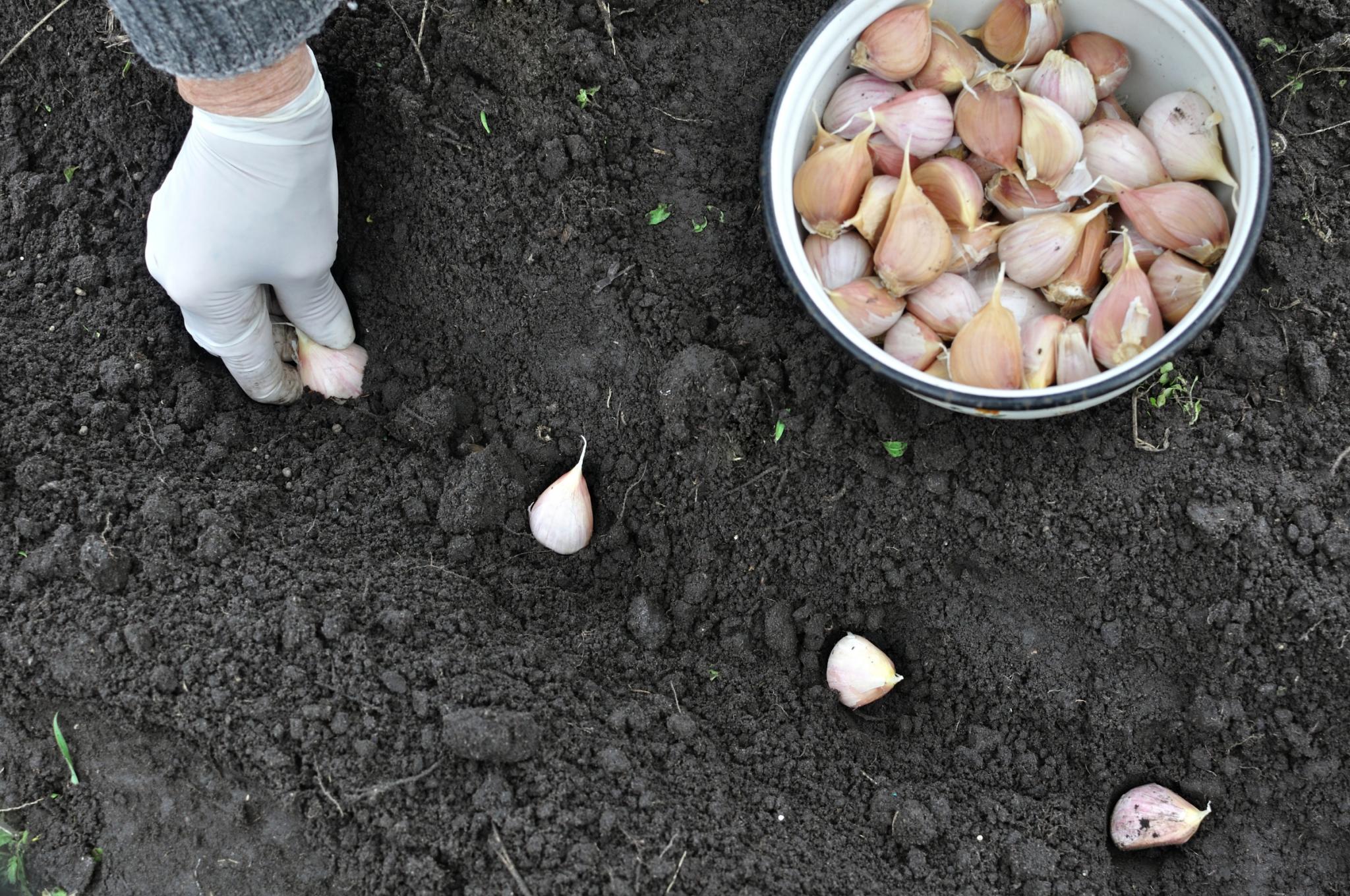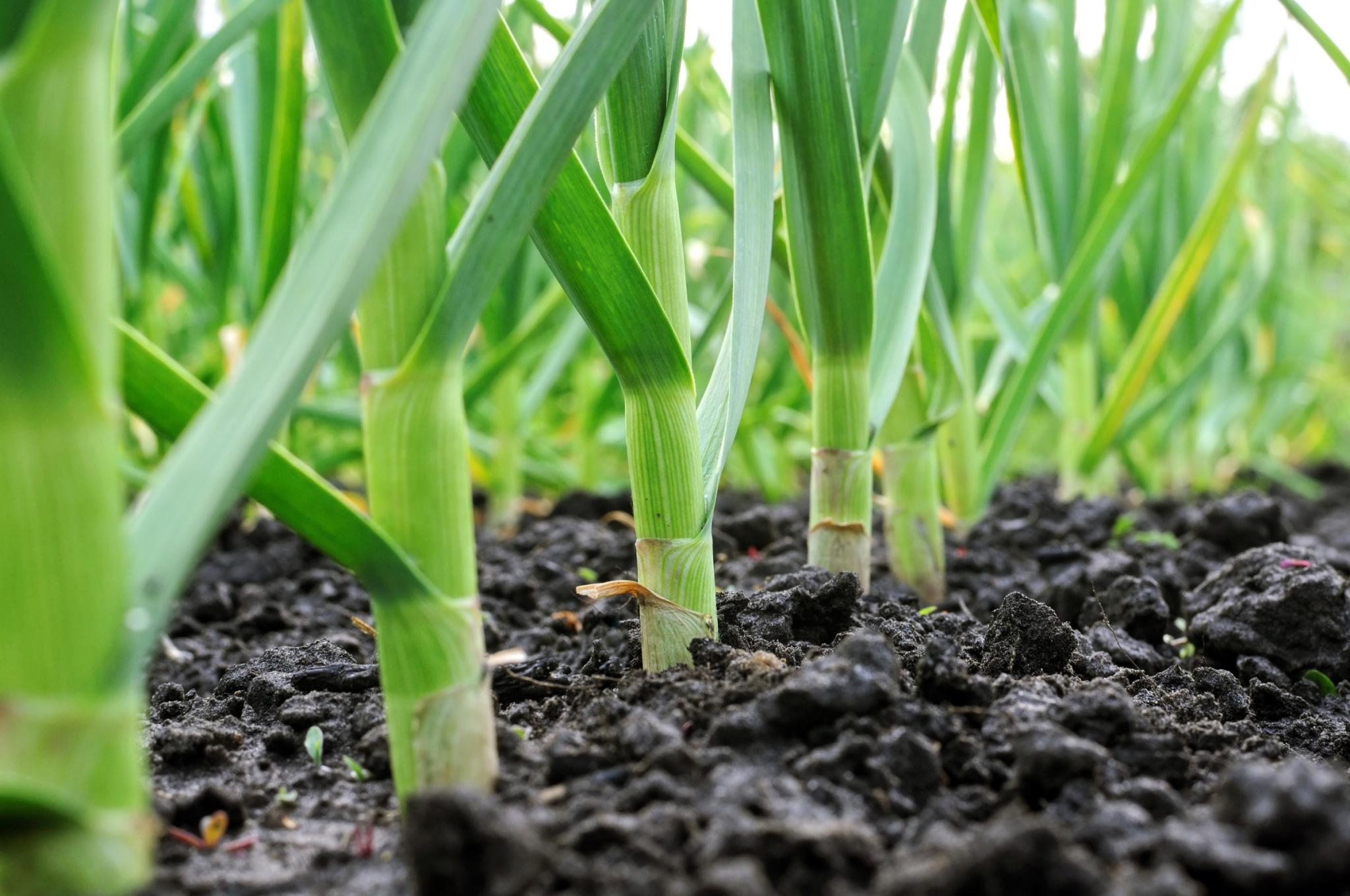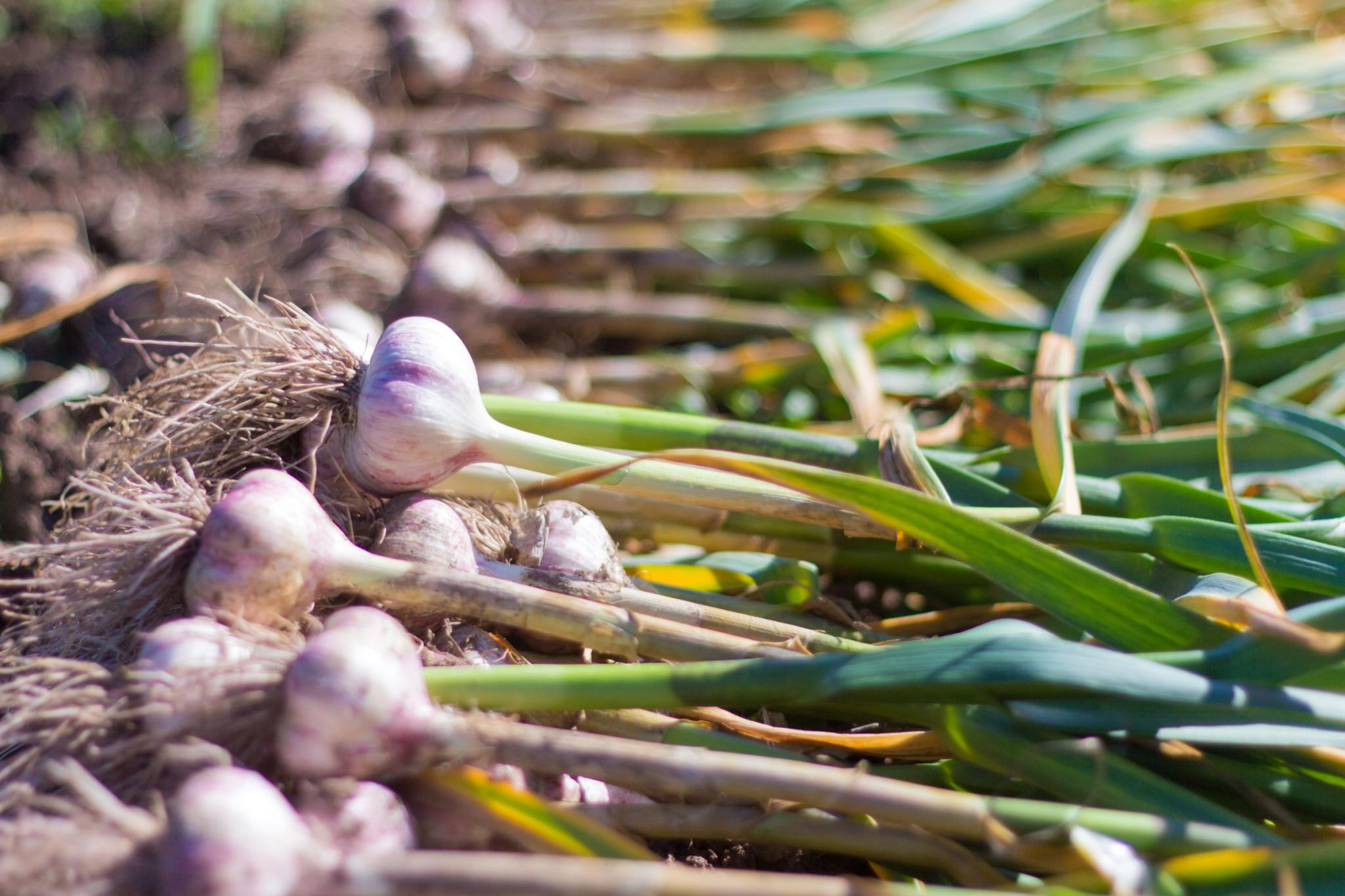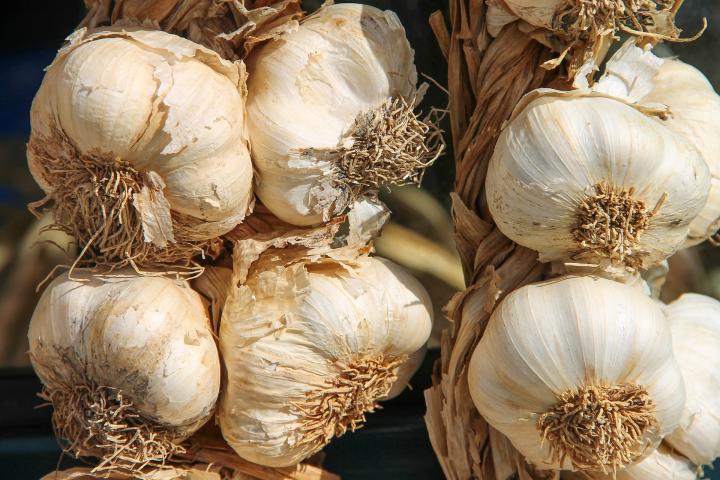
Planting, Growing, and Harvesting Garlic
The Almanac Garden Planner - Use It Free for 7 Days!
Plan your 2025 garden with our award-winning Garden Planner.
Before you choose a variety of garlic, you need to consider your climate, which determines whether you plant a hardneck or softneck variety. Then you need to consider your cooking because different varieties have different taste profiles, from mild to sweet to bold to spicy!
Hardneck Garlic
Hardnecks are the best choice for Northern gardeners. This variety is extremely cold hardy for harsh winters. These grow one ring of fat cloves around a hard stem, with fewer but larger cloves per bulb than softnecks.
Bonus! Hardnecks produce flower stems, aka “scapes,” which must be cut to encourage the bulbs to reach their full potential. The scapes themselves are an early summer treat, delicious if chopped into salads or added to stir-fries.
Popular hardneck varieties: ‘Music’ (on the mild side yet rich and mellow); ‘Chesnok Red’ (mild and sweet, creamy texture when roasted); ‘Early Italian’ (sweeter flavor that won’t overpower dishes); ‘German Red’ (robust, classic garlic flavor which cooks love); ‘Spanish Roja’ (strong and hot, heirloom with classic garlic flavor).
Softneck Garlic
Softnecks are more common with Southern gardeners, growing well in warm climates with warm winters. They have more intense flavors and tend to grow bigger bulbs with smaller cloves per bulb because energy is not being diverted to top-set bulblets like hardnecks.
They do not have scapes, but they store better than hardnecks. Like their name suggests, they have necks that stay soft after harvest and, therefore, are the types that you see braided together.
Popular softneck varieties: ‘California White Early’ (classic moderate garlic flavor, most popular grocery store type, harvest in spring); ‘California White Late’ (harvest in summer); ‘Inchelium Red’ (wonderful but mild garlic flavor, superior storage life); ‘Silver White’ (classic garlic, great storage, excellent for beginner); ‘Lorz Italian’ (hot and zesty heirloom, popular with cooks).
Elephant Garlic
Elephant garlic isn’t a true garlic, but it is grown similarly to hardneck varieties, requiring a long, cool growing season in zones 3 through 9. Most types take about 90 days to harvest once growth starts. Despite its size, it has quite a mild flavor, more similar to onion and shallots than traditional garlic. Bulbs and cloves are large (up to one pound each!), with just a few cloves to a bulb.
See our complete video that demonstrates how to grow and harvest garlic!
Cooking Notes
- Learn how to make your own garlic powder to easily spice up a recipe.
- Roasted garlic bulbs are also a favorite of ours!
- Around the summer solstice (late June), hardneck garlic sends up a seed stalk or scape. Allow it to curl, then cut off the curl to allow the plant to put its energy into bulb formation. Use the scapes in cooking the same way you would garlic bulbs. We like to stir-fry scapes the way we cook green beans—similar, with a spicy kick! Note that they get more fibrous and less edible as they mature.
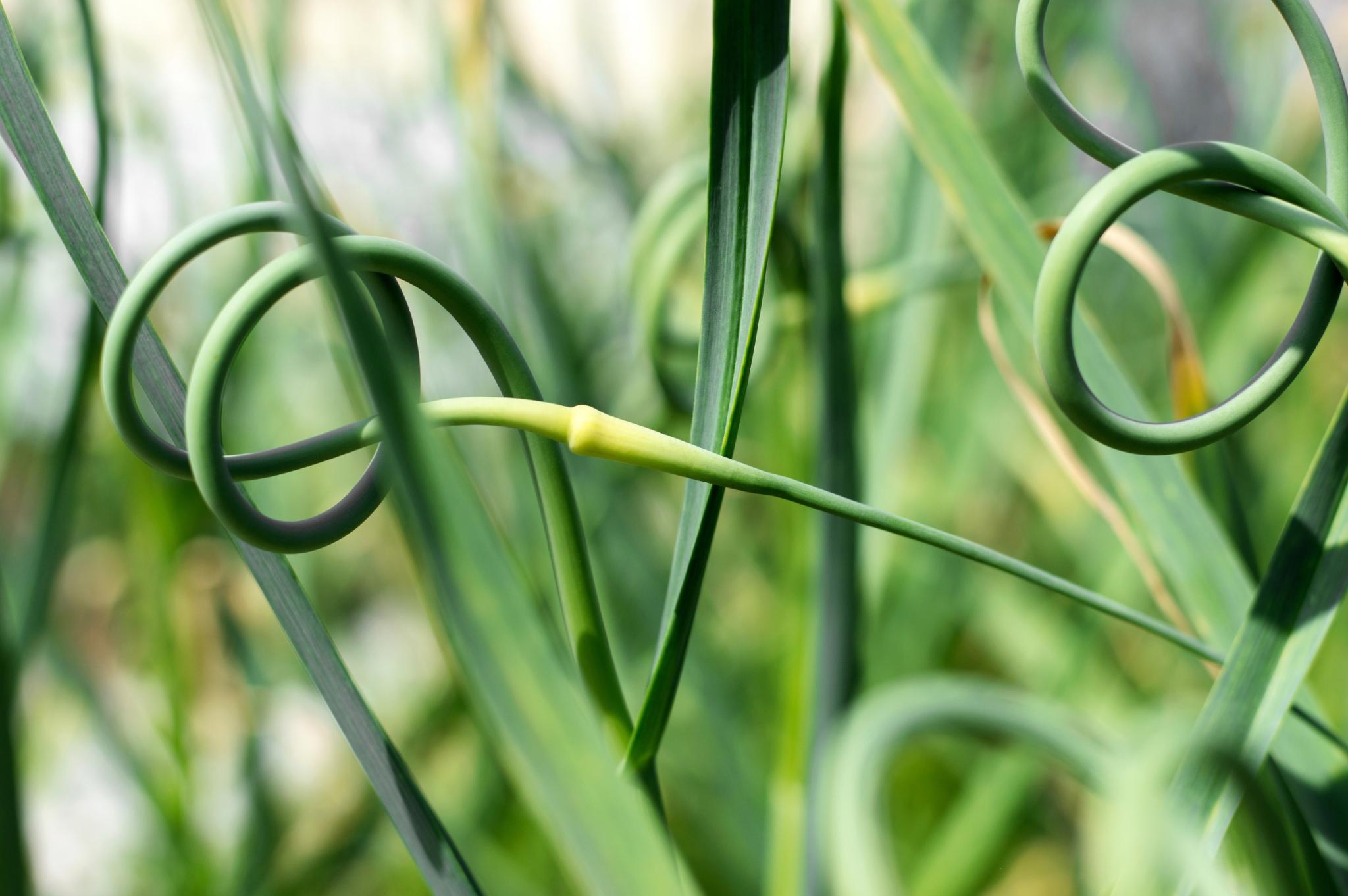
ADVERTISEMENT
The squirrels ate the greens as soon as they were up. They ate everything this summer including tomatoes and beets. Going to be a bad winter.
Goodness. We’re so sorry to hear that, and we know how much work you must have done during the planting season. Did they eat garlic scrapes? Usually, garlic and onion are planted near gardens because it’s so unpleasant to squirrels and other pests and deter them from eating. See tips for keeping squirrels out of the garden for next season. You don’t mention where you live, but the good news is that a mild winter is predicted for most of the U.S. and Canada in 2024–2025.
Great article on planting garlic. Just 2 sticky points, though...
1) You state early on (under "Planting Garlic - From a Clove") to plant 3 weeks AFTER first frost date, then a bit later (under "When to Plant Garlic"), 2) You state in those same sections, respectively, that garlic "needs a cold period to grow—about ten weeks before 45°F (or 8°C)" and it "does best if it can experience a 'dormancy' period of colder weather—at least 40˚F (4°C)—that lasts 4 to 8 weeks." I would really appreciate clarification.
In addition, as a first-time garlic grower, I think I put mine in several weeks late and I am very concerned about getting any harvest at all - I put them on Nov. 1 in Zone 4b (zip code 82834). Have I completely screwed up???
Thanks!!!
Thanks for writing, Kerry, and apologies for the confusion. We have updated the text above to ensure it’s clear and consistent. We also added a chart to show approximate dates for different planting times by zone. We hope this is helpful.
Thank you!!!
Hi, great site. One of our favorite things to do with the scapes is make garlic scape butter and freeze it, great for so many things, add other herbs as well!
Hello Catherine, would it be okay to put chopped garlic in an ice cube tray, top it up with oil and freeze? I would then put the frozen cubes in a freezer ziplock bag for further use? Thanks, Joanne
Hi, Joanne. Excellent idea! You should also coat the bottom of each compartment with some oil before adding the chopped garlic.
Totally irresponsible to not even mention botulism while encouraging this practice. Does the Farmer's Almanac encourage creating your own canning recipes also?
In the article it recommends to separate bulbs for a few days before planting. In Ben’s video he says to plant immediately after separating.
Can you give additional clarification?
Love your articles!



